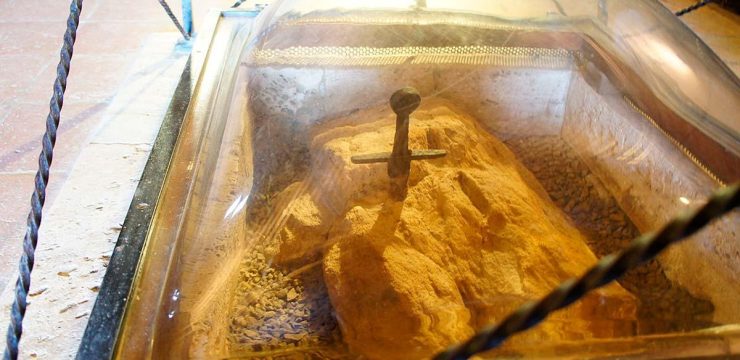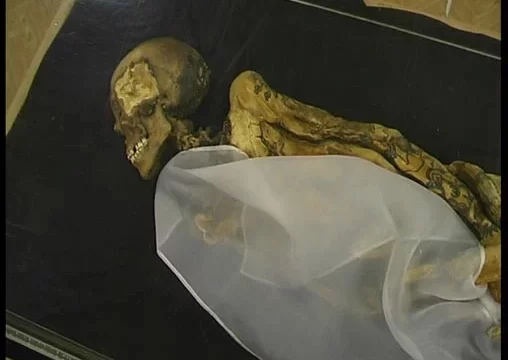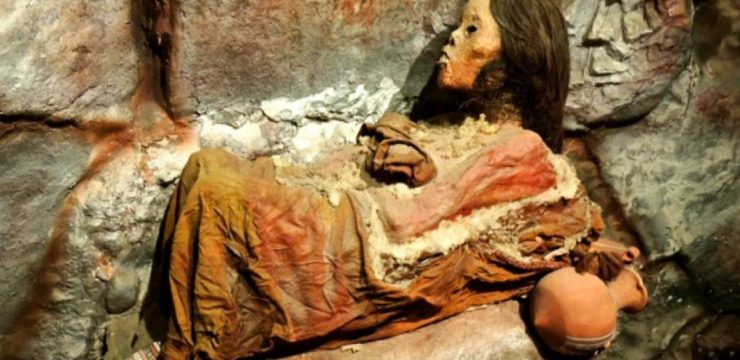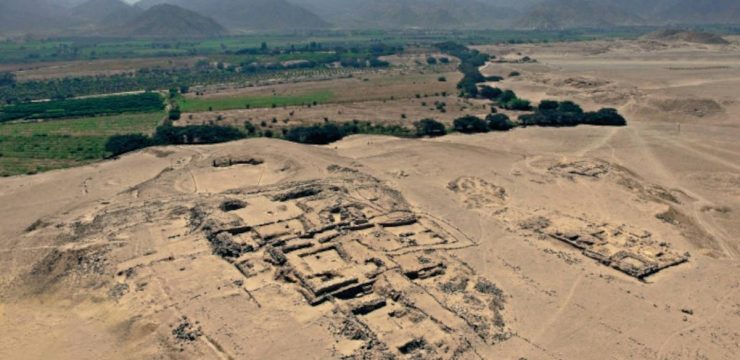Throughout history, few artifacts have managed to stir both unease and grim fascination as profoundly as the recently unearthed “Soyjack” torture mask. This 200-year-old bronze device, discovered in Germany, is a haunting testament to the depths of human cruelty. While many artifacts from the past reveal insights into craftsmanship, culture, or technological advancements, this particular discovery sheds light on something far more disturbing—the lengths to which people have gone to inflict pain, control, and terror. The “Soyjack” mask is not just an object of historical significance; it is a chilling reminder of an era when suffering was deliberately engineered.
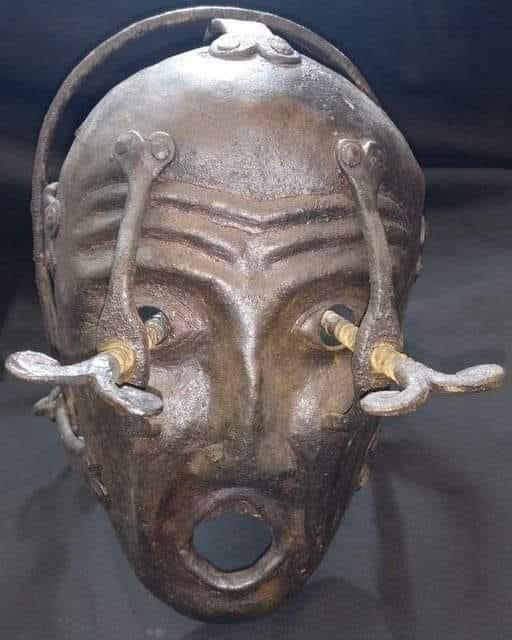
The mask, crafted in the 19th century, was meticulously designed to serve one sinister purpose: to cause extreme psychological and physical distress. Its exaggerated features—bulging eyes and a grotesquely contorted open mouth—were not just artistic choices. They were intended to instill terror, forcing the unfortunate wearer into a perpetual state of fear and humiliation. Unlike ceremonial masks meant for rituals or theatrical performances, the “Soyjack” mask was a weapon wielded against human dignity. It was a tool designed to dehumanize, turning its victims into mere objects of suffering.
What makes this mask even more horrifying is the precision of its design. When fastened securely around a person’s head, it severely restricted their ability to see, speak, or even breathe properly. The interior of the mask was lined with sharp protrusions, ensuring that even the slightest movement resulted in fresh waves of pain. Every breath, every attempt to cry out, became a source of agony. The sheer cruelty of such a device forces us to question the motivations behind its creation. Was it a form of punishment? A means of interrogation? A tool for public humiliation? Regardless of its specific use, the mask embodies the darkest facets of human ingenuity—where technical skill was used not to heal or create, but to destroy.
Artifacts like the “Soyjack” mask provide more than just a glimpse into a brutal past; they force us to confront the uncomfortable reality that such atrocities were, at one time, considered acceptable in certain societies. While modern civilization prides itself on advancements in human rights and ethical governance, relics like this serve as stark reminders that cruelty was not only tolerated but systematically implemented. This mask, cast in bronze and preserved through time, speaks volumes about the historical normalization of suffering.
Torture devices have existed across cultures and centuries, each designed to break the body and spirit in unique ways. The “Soyjack” mask, however, is particularly unsettling due to its psychological impact. While whips and racks inflicted physical wounds, this mask was an instrument of sustained psychological torment. The victim was not just physically restrained but was also subjected to a forced identity—a grotesque, exaggerated expression that mocked their suffering. This aspect of dehumanization was a deliberate choice, ensuring that the individual beneath the mask was stripped of their personhood, reduced to an object of ridicule and pain.
Understanding the context in which such devices were created is crucial. The 19th century, despite its advancements in industry and thought, was still rife with systems of oppression. In various parts of the world, punishment was not merely about justice but about dominance. Humiliation was often used as a means of control, ensuring that those who defied authority were broken not just in body, but in spirit. The “Soyjack” mask is an unsettling embodiment of this philosophy—a relic of a time when suffering was orchestrated with precision.
Discoveries like this challenge us to reflect on our own era. While we may no longer employ such brutal devices, psychological and systemic forms of oppression still persist. The lessons from artifacts like the “Soyjack” mask are not just about the past; they are about vigilance in the present. We must recognize that cruelty, in all its forms, thrives in environments where it is ignored or justified. Studying these artifacts is not a morbid fascination—it is an essential act of historical awareness.
As we examine the mask, we are reminded of the importance of confronting humanity’s darkest chapters. The weight of history is not just in grand achievements or technological progress but in acknowledging the suffering inflicted upon others. By studying objects like this, we are called to reaffirm our commitment to justice, dignity, and human rights. The mask is more than a historical curiosity; it is a warning. It urges us to remain vigilant against the resurgence of such inhumane practices in any form.
The discovery of the “Soyjack” torture mask in Germany forces us to grapple with the unsettling aspects of our shared history. It compels us to ask difficult questions about the nature of power, cruelty, and control. Were those who used this mask aware of the sheer horror they were inflicting? Did they justify their actions through a warped sense of order? Or were they indifferent to the pain of others? These questions do not have easy answers, but they are necessary to ask.
The mask’s legacy extends beyond its original time and place. It stands as a reminder of the fragility of human dignity when placed in the hands of those who wield power without compassion. It is an object that speaks across time, warning us that the capacity for cruelty has always existed and will continue to exist unless actively opposed. We must ensure that the lessons from history are not lost, that we do not become complacent in the face of injustice.
In the modern world, where discussions about human rights and ethics are at the forefront of many global conversations, the presence of artifacts like the “Soyjack” mask serves as an unsettling counterpoint. It reminds us that progress is not inevitable—it is a choice. Societies do not naturally become more just; they must consciously work toward justice. The mask is not just a relic—it is a challenge, asking us to reflect on how far we have come and how much further we have yet to go.
At its core, the “Soyjack” mask embodies a fundamental question: how should power be wielded? Should it be used to uplift and protect, or to subjugate and harm? History has shown that when power is unchecked, it often veers toward the latter. The discovery of this mask is not just an opportunity for archaeological study; it is a call to remember, to reflect, and to ensure that history’s mistakes are not repeated.
As we close this chapter on the “Soyjack” mask, we must do so with a renewed sense of responsibility. The past cannot be changed, but the future remains unwritten. This mask, with all its horrors, serves a purpose beyond its original design—it reminds us of what must never be allowed to happen again. Let this artifact stand not just as a testament to cruelty, but as a symbol of the ongoing fight for human dignity in all its forms.

